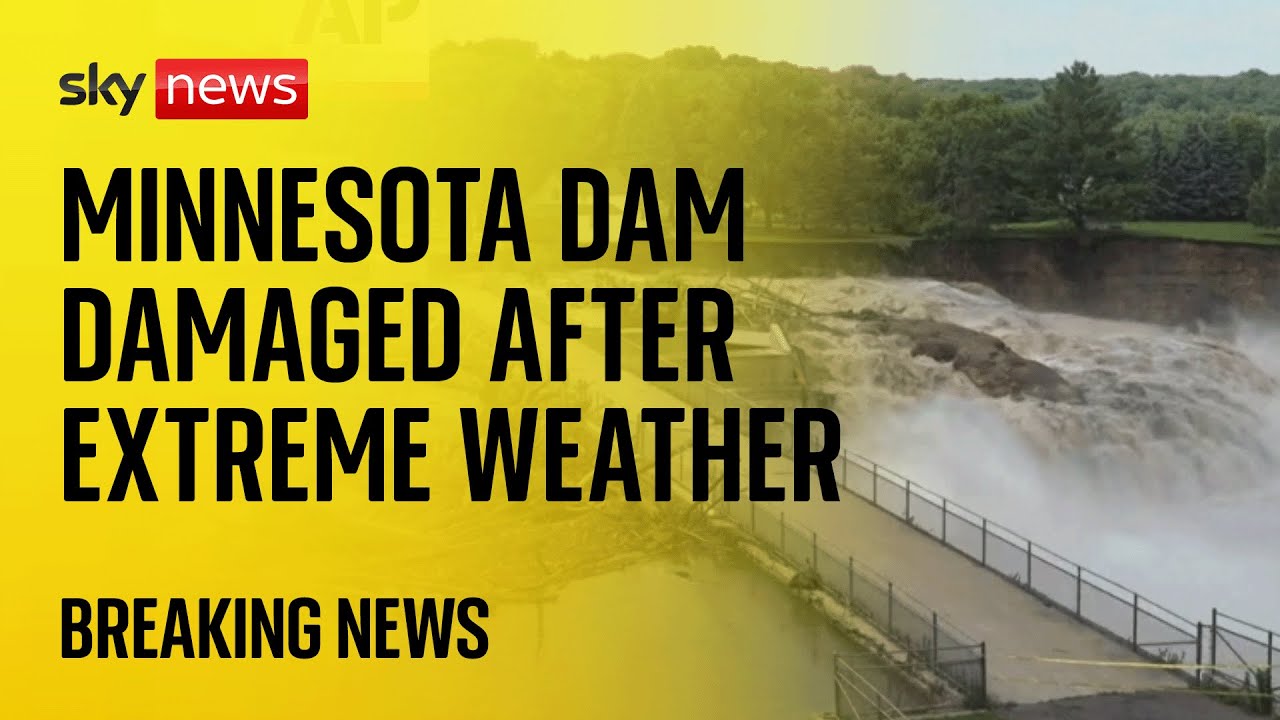Dam Failures in Minnesota: Dam Failure Minnesota
Dam failure minnesota – Minnesota has a long history of dam failures, with over 100 recorded incidents since the early 1800s. These failures have ranged in severity from minor breaches to catastrophic collapses, resulting in significant property damage, loss of life, and environmental impacts.
The recent dam failure in Minnesota has raised concerns about the safety of other dams in the state. KEYC News has been following the story and providing updates on the situation. The station has also been reporting on the efforts to repair the dam and prevent further damage.
Notable Dam Failures in Minnesota
Some of the most notable dam failures in Minnesota include:
- Saint Paul Dam Failure (1889): This catastrophic failure occurred during a heavy rainstorm, causing the collapse of the dam and the release of a massive floodwave that devastated the city of Saint Paul, killing over 200 people.
- Austin Dam Failure (1938): This failure occurred due to heavy rainfall and inadequate spillway capacity, leading to the collapse of the dam and the flooding of the city of Austin, causing significant damage and loss of life.
- Kellogg Dam Failure (1989): This failure occurred due to a combination of factors, including heavy rainfall, inadequate spillway capacity, and a faulty spillway gate, leading to the collapse of the dam and the flooding of the Root River valley, causing extensive damage and loss of life.
Causes of Dam Failures

Dam failures are often caused by a combination of factors, including design flaws, construction errors, and natural disasters. These failures can have catastrophic consequences, leading to loss of life, property damage, and environmental degradation.
Design flaws can include inadequate spillway capacity, insufficient foundation support, and poor materials selection. Construction errors can include improper compaction of earthfill dams, faulty concrete placement, and inadequate drainage systems.
Natural Disasters
Natural disasters, such as earthquakes, floods, and landslides, can also cause dam failures. Earthquakes can damage dam structures, while floods can overtop dams or cause them to collapse under the weight of the water. Landslides can block spillways or damage dam abutments.
Climate Change and Extreme Weather Events
Climate change is increasing the risk of dam failures by leading to more extreme weather events, such as heavy rainfall and flooding. These events can put additional stress on dams, increasing the likelihood of failure.
Examples of Dam Failures
Some notable examples of dam failures include:
- The St. Francis Dam failure in California in 1928, which was caused by a design flaw in the spillway.
- The Vajont Dam failure in Italy in 1963, which was caused by a landslide that blocked the reservoir.
- The Banqiao Dam failure in China in 1975, which was caused by a combination of design flaws and heavy rainfall.
Consequences of Dam Failures

The catastrophic consequences of dam failures can be far-reaching, leaving lasting scars on communities, ecosystems, and economies. From the immediate loss of life and property destruction to the long-term environmental impacts, dam failures have the potential to disrupt entire regions.
Loss of Life and Property Damage
The most tragic consequence of dam failures is the loss of human life. When a dam collapses, the resulting floodwaters can unleash a torrent of water and debris, sweeping away homes, businesses, and infrastructure in its path. The sudden release of water can also cause drowning, electrocution, and other injuries.
Economic Costs, Dam failure minnesota
Dam failures can also have a significant economic impact. The repair and reconstruction of damaged infrastructure, such as roads, bridges, and buildings, can be extremely costly. Additionally, business disruptions caused by power outages, transportation delays, and loss of access to water can lead to further economic losses.
Environmental Impacts
Dam failures can have devastating effects on the environment. The sudden release of water can alter river flows, damage aquatic habitats, and displace wildlife. The floodwaters can also carry sediment, pollutants, and debris downstream, harming water quality and ecosystems.
Dam failures can have devastating consequences, as evidenced by the recent tragedy in Minnesota. However, such incidents highlight the importance of understanding the location of dams to ensure proper maintenance and preparedness. One such dam, the Rapidan Dam, is situated in rapidan dam location , a strategic location that underscores the need for constant vigilance to prevent future dam failures and safeguard communities.
The dam failure in Minnesota serves as a stark reminder of the importance of dam safety. While such incidents are rare, their potential consequences can be devastating. To ensure the safety of our communities, it is crucial to maintain and inspect dams regularly.
One example of a dam that has been subject to rigorous inspections is the Rapidan Dam in Minnesota. This dam’s location and design have been carefully assessed to minimize the risk of failure and protect the surrounding area.
The recent dam failure in Minnesota has left many residents without access to clean water. Keyc News has been providing updates on the situation, including information on how to get help. The dam failure has also caused significant damage to the local infrastructure, and it is unclear how long it will take to repair the damage.
Dam failures in Minnesota have left a lasting impact on the state’s landscape and communities. One such incident was the Mankato Dam failure in 1868, which resulted in devastating flooding and the loss of lives. This event serves as a stark reminder of the importance of dam safety and the need for continuous monitoring and maintenance to prevent similar tragedies from occurring in the future.
